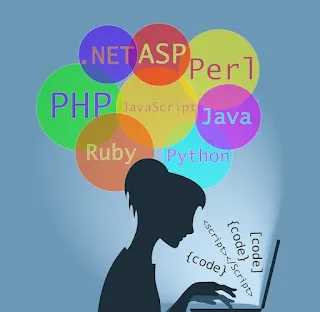Exploring Python Libraries A Deep Dive into Powerful Tools
Introduction
Begin by introducing the importance of libraries in Python programming. Highlight how libraries extend the functionality of Python and make complex tasks more manageable.
The Foundation: Standard Libraries
Discuss Python's rich set of standard libraries bundled with the language. Touch upon commonly used modules such as os, sys, and math, and emphasize their role in everyday programming tasks.
Pandas: Explore the capabilities of Pandas for efficient data manipulation and analysis. Discuss data frame structures, data cleaning, and statistical operations.
NumPy: Dive into NumPy for numerical operations and array manipulations. Showcase its role in scientific computing and how it enhances performance.
Web Development Tools
Flask: Provide an overview of Flask for building web applications. Cover basic routing, template rendering, and integrating Flask with other libraries.
Django: Explore the features of Django, a powerful web framework. Discuss its ORM, template system, and how it promotes rapid development.
Machine Learning and AI
Scikit-Learn: Detail the use of Scikit-Learn for machine learning tasks. Cover key algorithms, model evaluation, and showcase its simplicity for beginners.
TensorFlow and PyTorch: Compare and contrast these deep learning libraries.
Data Visualization
Matplotlib: Discuss the versatility of Matplotlib for creating various plots and charts. Provide examples and tips for effective data visualization.
Seaborn: Introduce Seaborn as a high-level interface to Matplotlib. Show how it simplifies the creation of statistical graphics.
Specialized Libraries
Requests: Explore the Requests library for HTTP requests. Discuss how it simplifies working with APIs and fetching web data.
Beautiful Soup:
Dive into Beautiful Soup for web scraping tasks. Provide examples of extracting information from HTML and XML documents.
Exploring Python Libraries: A Deep Dive into Powerful Tools" is a compelling title that suggests an in-depth exploration of various Python libraries. To enhance the appeal of the blog post, consider adding a subtitle or brief description that highlights specific libraries you'll cover or the practical applications readers can expect to learn. Here's an expanded version for inspiration:
Subtitle: Uncover the Full Potential of Your Python Projects with These Essential Libraries
Description: Embark on a journey into the heart of Python programming as we delve into a diverse range of powerful libraries. From data manipulation and analysis to web development and machine learning, this comprehensive guide will showcase the tools that can elevate your projects to new heights. Join us as we unravel the capabilities of well-known libraries and discover hidden gems that can revolutionize your coding experience. Whether you're a seasoned developer or just starting, this deep dive into Python libraries is your gateway to mastering the art of leveraging tools effectively.
Optimizing Performance: Tips for Efficient Python Code
Introduction
Start by emphasizing the importance of performance optimization in Python programming. Highlight how efficient code leads to faster execution, reduced resource usage, and an overall better user experience.
Choose the Right Data Structures
Lists vs. Sets vs. Dictionaries:
Discuss the differences between these common data structures and when to choose one over the others. Emphasize the importance of selecting the most suitable structure for specific operations.
Use Tuples for Immutability:
Explain how using tuples for immutable data can improve performance, especially when dealing with constant values.
Leverage Built-in Functions
Map, Filter, and Reduce: Showcase the power of these functional programming tools for concise and efficient code. Provide examples of how they can replace loops for certain operations.
List Comprehensions:
Explore the efficiency gains offered by list comprehensions compared to traditional loops. Highlight their readability and performance benefits.
Employ Generators for Large Datasets
Explain how generators can be more memory-efficient than lists, especially when dealing with large datasets. Discuss the use of the yield statement to create lazy iterators.
Optimize String Manipulation
String Concatenation vs. Join: Compare the performance of string concatenation and the join method. Recommend using join for improved speed, especially with large strings.
Formatted String Literals (F-strings): Introduce F-strings and their efficiency for string formatting compared to other methods.
Memory Management
Avoid Unnecessary Copies: Discuss strategies to minimize unnecessary copying of data, such as using slices and avoiding redundant assignments.
Context Managers and the Statement: Emphasize the use of context managers to ensure proper resource management and avoid memory leaks.
Profiling and Benchmarking
Use Profiling Tools: Introduce profiling tools like cProfile for identifying bottlenecks in your code. Provide examples of how to use these tools effectively.
Benchmarking Libraries: Explore external libraries like time and pytest-benchmark for comparing the performance of different implementations.
Utilize Just-In-Time (JIT) Compilation
Discuss the concept of JIT compilation and how tools like Numba and PyPy can be used to dynamically compile Python code for improved execution speed.
Conclusion
Summarize the key tips discussed in the blog post and reiterate the importance of optimizing code for better performance. Encourage readers to apply these strategies in their projects.
Final Thoughts
Share any additional tips, resources, or best practices for optimizing Python code. Invite readers to share their own optimization experiences and challenges in the comments.
This outline provides a structured approach to cover various aspects of optimizing Python code for performance. Remember to expand each section with detailed explanations, code examples, and practical advice to make the content informative and actionable.
This outline provides a structured approach to cover a variety of Python libraries. Remember to expand each section with detailed explanations, code snippets, and practical examples to make the content informative and engaging
Conclusion
Summarize the significance of Python libraries in enhancing productivity and solving diverse challenges. Encourage readers to explore and experiment with different libraries based on their project needs.
See Also:


Comments
Post a Comment